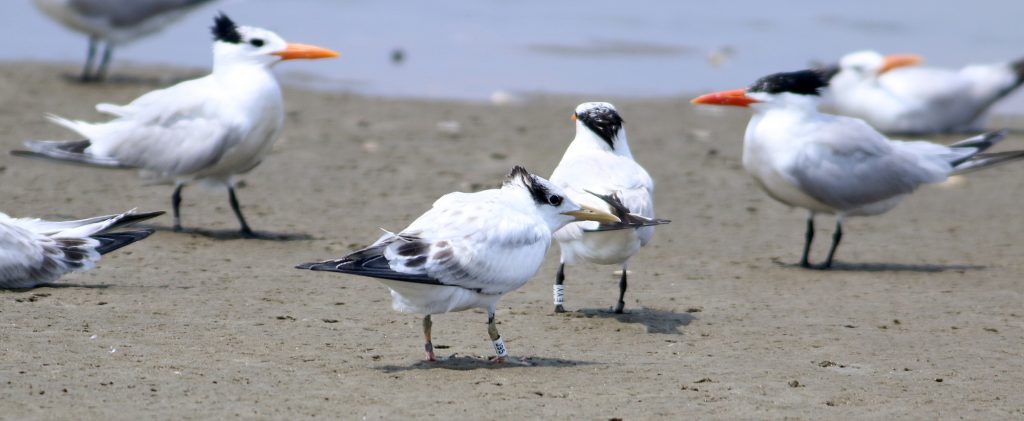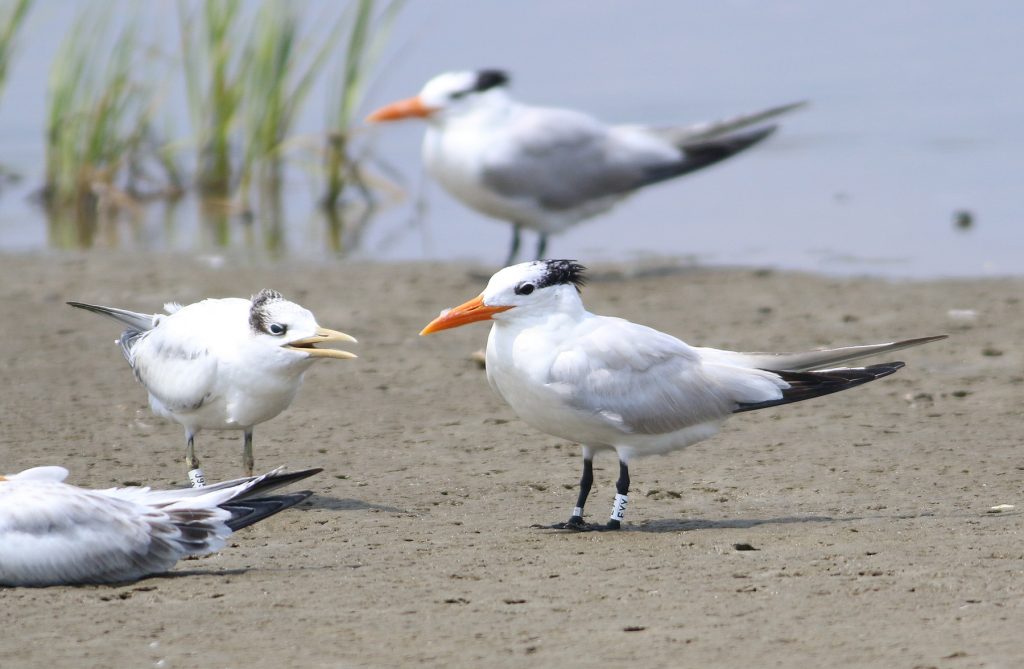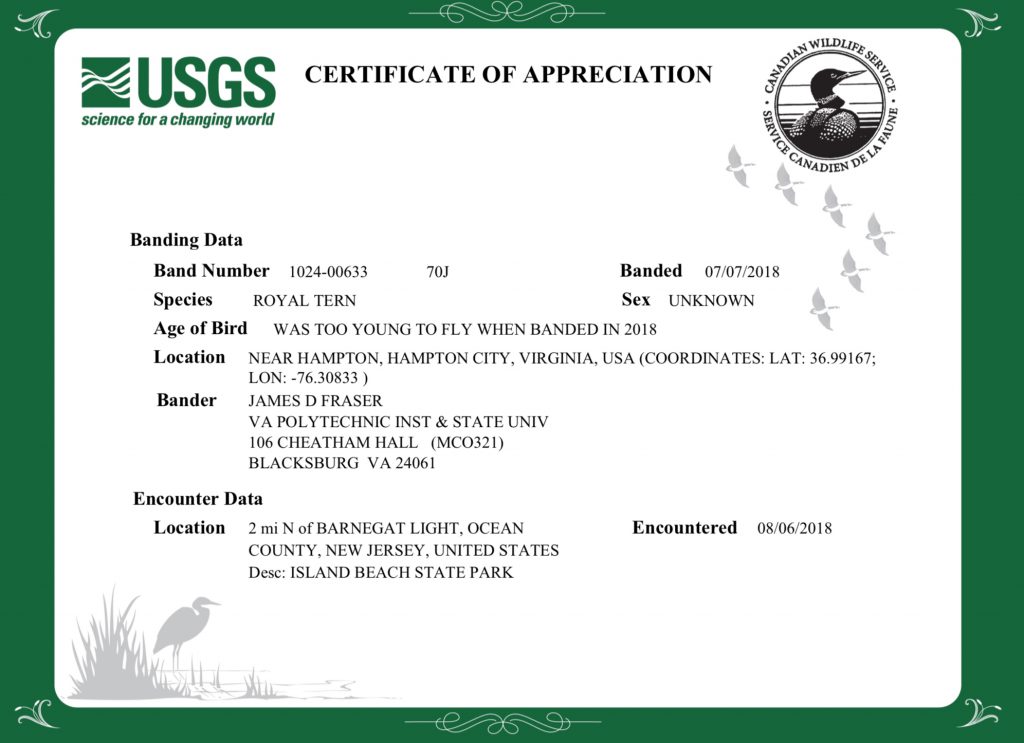I am a fan of looking for banded birds. In the past, I have described finding banded Tundra Swans, Snow Geese, and Red Knots and Piping Plovers. Today Jeanine and I went to the Island Beach SP Sedge Islands and found our first ever banded Royal Terns. On last week’s expedition to the same location, we only saw ~5 Royal Terns, but today the number was up to a whopping 71 Royals. So it appears that they are on the move, and you know it’s a good day when your count exceeds the eBird filter. Surprisingly, 13 of these Royal Terns were banded, with the vast majority being immature birds. A few representative photos of these birds are posted below.

Here is immature bird J95 who was repeatedly posturing for the nearby banded adult, EYY. Our first Caspian Tern of the Sedges season is on the right as a nice comparison, with its redder bill and complete black cap contrasting nicely with the Royal Terns.
To the best of my knowledge, Royal Terns currently do not nest in New Jersey, so where are these birds coming from? I can’t recall the source, but my impression is that the closest breeding location for Royal Terns is ~100 miles away, near Ocean City MD, and that after breeding they disperse northward, which is when we see them here in NJ. The great thing about reporting these birds today is that we should be getting information from the banders that would confirm the source of our Royal Terns. I am very much looking forward to receiving that information and passing it along here when it arrives.
UPDATE: As you can see from the image above, the results have arrived. Not too surprisingly based on the identical band colors, all the birds originated from the same location, having been banded on the south island of the Hampton Roads Bridge-Tunnel in Hampton, VA. Hampton is on the southern tip of Chesapeake Bay, 225 miles south from where we located them. For this project, a group of 20+ researchers from Virginia Tech along with volunteers banded more than 2,500 Royal Tern chicks on July 7. All except one of our re-sighted Royal Terns were hatched and banded this past July, with one adult having been banded in 2016 (also in Hampton VA). So the results confirm our suspicion about ‘our’ Royal Terns in NJ dispersing from the Chesapeake Bay region.
The banded Royal Terns have continued to show up well into August, during which we re-located five different terns that we reported on Aug. 6, and we also found seven new banded terns.



